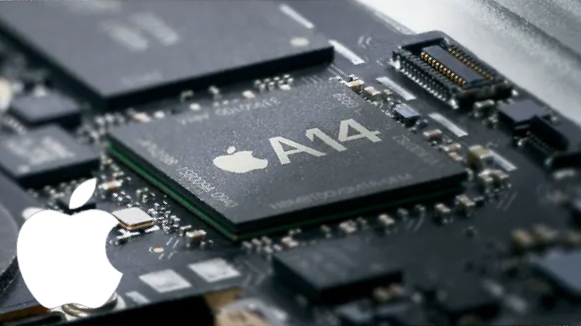Apple has been ahead of the mobile processor market for a while now, and its not stopping anytime soon. Since the released of the iPhone 11 and 11 Pro series, the Silicon Valley giant made a bold claim that their processors were 2 years ahead of other flagship smartphones. Today, their statement rings true. However, things are set for an incredible twist in 2020. As the release of the iPhone 12 devices draws closer than ever, rumors, leaks and benchmarks have been revealed, and the A14 is amping up to be Apple’s best processor yet.
It might not sound like much considering that Apple’s previous A-Series mobile processors have always improved over their predecessors, but the A14 is setting a new precedent for chip sizes in the smartphone industry. With a miniscule 5nm chip, the A14 packs more power than ever, yet will be more effective at managing the battery life of a device.
Apple and TSMC exclusive partnership
The A14 is part of Apple’s partnership with semiconductor manufacturer TSMC. In 2018, TSMC invested $25 billion towards the research and development required to produce 5nm processors. These chips are developed to be efficient with 5G applications, Artificial Intelligence, cryptocurrency and GPU applications. Additionally, this investment was also made in a bid to remain Apple’s exclusive partner with the supply of mobile processors.
TSMC has remained the sole manufacturer of Apple’s mobile processors since 2016. Thanks to their efficiency and consistency, they have proven to be more valuable than Samsung. After the rumors circulating inconsistent battery life on the iPhone 6 and 6S models from Samsung, it was not so long before Apple’s decision to fully streamline the manufacturing process. With the production of the A10 for the iPhone 7 series, TSMC has steadily delivered great products for Apple.
The importance of 5nm processors
According to Moore’s Law (an observation on transistor technology), it was projected that the number of transistors within an integrated circuit usually doubles every two years. Some researchers have theorized that 5 nanometer nodes will be the end of Moore’s Law, the phenomenon known as quantum tunneling. In a nutshell, its when stuff becomes so small, they don’t work like they are normally predicted to occur.
With 5nm processors, this is basically pushing that limit and will be the final phase of a phenomenon that was observed in 1965. After these processors, researchers must restructure the science behind processors. Even with the imminent roadblock, rumors have begun concerning 3nm chips expected to arrive by 2022.
According to TSMC, the 5nm chips are 15% faster than the blazing speeds found on 7nm processors. Even better, 5nm chips consume 30% lower power than the current A13 found in Apple’s flagships. Obviously, this does not directly translate to 30% more battery life due to other potential specification upgrades like the display, cameras, higher refresh rates and 5G. Regardless, there is a guaranteed power efficiency from this tiny beast. As the first ARM-based mobile processor with a 3 GHz maximum CPU clock speed, this is certainly the start of new generation.
The smartphone industry is not the only one enjoying smaller and faster processors. Just recently, AMD’s Ryzen 7 shocked the PC market with its superb speed and unrivalled power efficiency. The 7nm chip from the company has won the hearts of many PC owners, and it is providing developers and creators with the right resources to push the boundaries of computing.
Expected mass sales
Thanks to its ubiquity as Apple’s first ARM-based mobile processor, the A14 is expected to do well in the market. Although, we might not know for sure considering the worldwide economic impact of 2020’s events. According to historic data and rumors from various sources, the iPhone 12 is expected to come in 4 variants, all expected to contain the new flagship processor. With an expected starting price of $700, the prices will go up all the way to the north of $1000 with the fully spec-ed out variant.
Even with the hefty price tags, we can all celebrate with what these chips mean for other manufacturers in the Android space. In order to compete, they will have to offer more attractive prices and similar specifications.
Performance
According to a recent Geekbench listing, the A14’s performance leaked online. Even with the possibility of these leaks being fake, it is also quite likely to be real considering TSMC’s public interviews and officially revealed information. The multicore score is a whopping 4,612 points which is much better than the 4,568 points found in the advanced A12X found in the PC rival 12.9-inch iPad Pro.
The iPhone 12 is reportedly expected to have 4GB RAM with its base model. This may not seem like a lot, but for an iOS device, 4GB of RAM is capable of many tasks. Thanks to Apple’s unique architecture, RAM management on iOS is unrivalled. With the Pro variants, we are expecting a 120Hz OLED display which is astronomically good for an Apple device. Many tech enthusiasts have anticipated these specs. Couple that up with 6GB RAM and we might have the toughest cat to beat for other flagship manufacturers like Samsung and OnePlus.
Moreover, mmWave 5G connectivity and a LiDAR sensor for better augmented reality are also expected. Some of the applications of this tech might not seem so imminent in 2020, but this device is future proof. With IoT on the rise thanks to 5G, we will begin to see the uses of these features up to two years after its release.
With the Snapdragon 865 Plus, power is enhanced with performance phones like the ASUS ROG Phone 3 which is expected to sport the chip. However, it is not expected to outperform the leaked numbers of the A14. On the regular Snapdragon 865, the multi-core scores do not come close.
As the first ARM-based mobile processor at 5nm, the Apple A14 Bionic chip is certainly one worth looking forward to. As smartphones begin the transition into the age of 5G and proper IoT, Apple continues their trend as pioneer.

